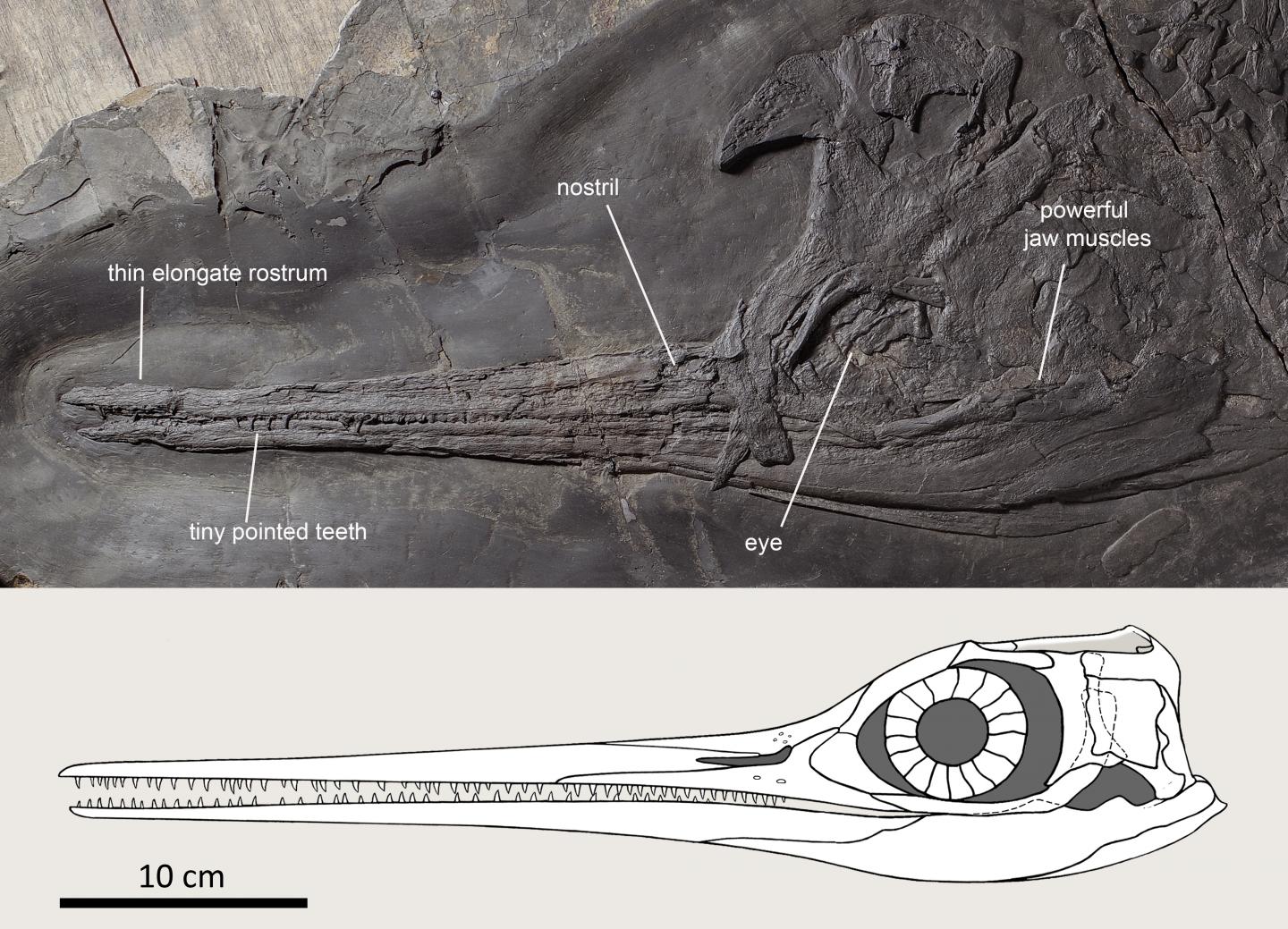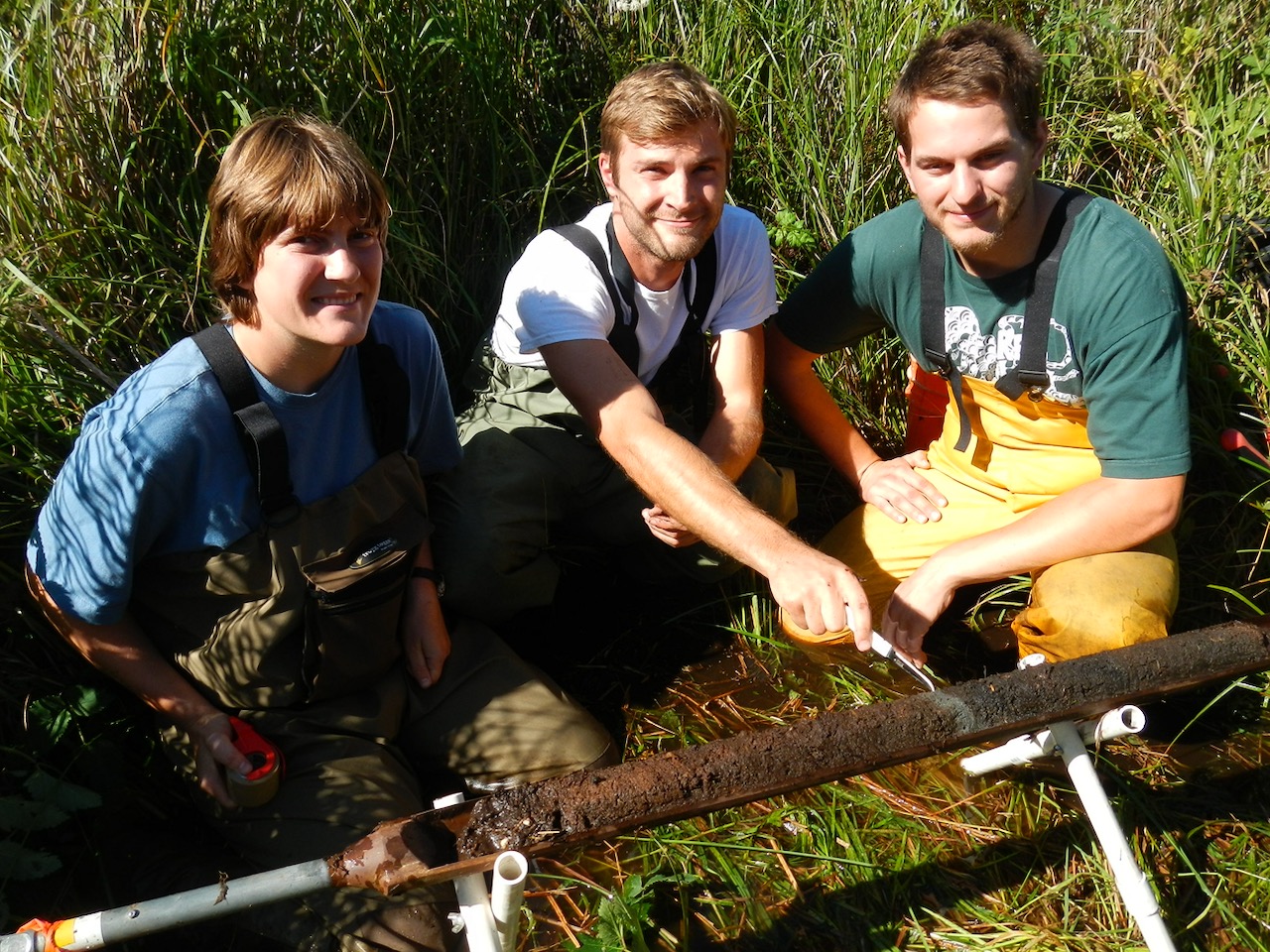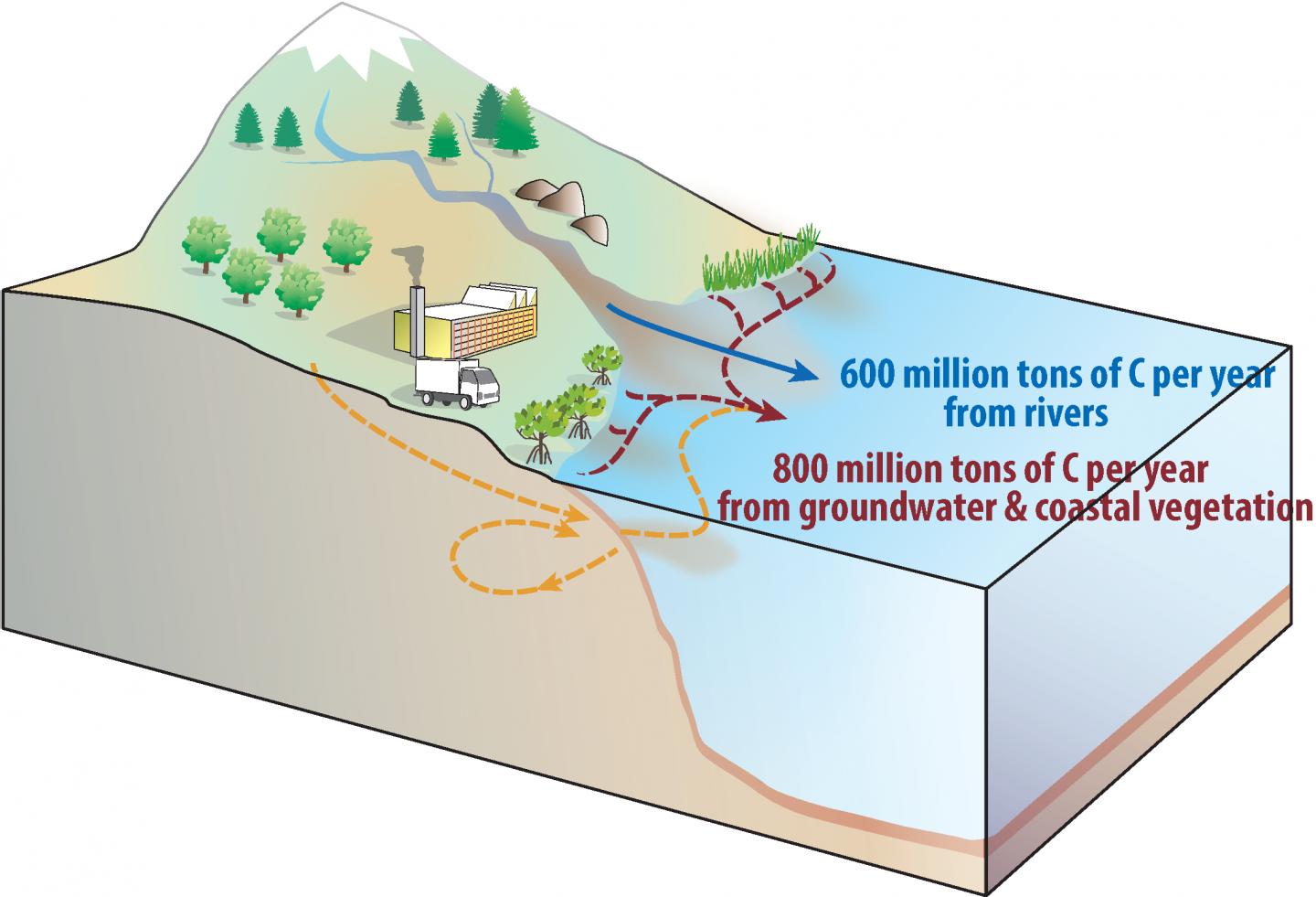Researchers have identified the key factors that influence a vital pattern of ocean currents. The Atlantic meridional overturning circulation (AMOC) carries warm water from the tropics northward. Many scientists think that this heat transport makes areas including north-west Europe and…
Tag: OCEANOGRAPHY
Using fossil plant molecules to track down the Green Sahara
New publication: Researchers explain how vegetation was possible in the desert
Extreme CO2 greenhouse effect heated up the young Earth
Very high atmospheric CO2 levels can explain the high temperatures on the still young Earth three to four billion years ago. At the time, our Sun shone with only 70 to 80 per cent of its present intensity. Nevertheless, the…
Plastic in Galapagos seawater, beaches and animals
Plastic pollution has been found in seawater, on beaches and inside marine animals at the Galapagos Islands. A new study – by the University of Exeter, Galapagos Conservation Trust (GCT) and the Galapagos Science Center – found plastic in all…
Antarctic hotspot: Fin whales favour the waters around Elephant Island
Sound recordings show: the baleen whales use the island’s krill-rich waters virtually year-round, which is why it needs to be protected
Global Fishing Watch launches new technology to enhance ocean management
Groundbreaking portal harnesses open data and machine learning to help transform management and research for critical marine areas
Seabirds sound alarm: Breeding success corresponds to hemispheric rates of ocean warming
Long-term data show fish-eating species are struggling to raise young in northern hemisphere
Icebergs push back
Slushy iceberg aggregates control calving timing on Greenland’s Jakobshavn Isbræ
Warm ice may fracture differently than cold ice
New study suggests old rules on how ice breaks may not always hold up
Geological riddle solved: Roof of the World has gotten higher
There has long been controversy about whether the world’s highest region, Tibet, has grown taller during the recent geological past. New results from the University of Copenhagen indicate that the ‘Roof of the World’ appears to have risen by up to 600 met
Scientists sound alarm about unprecedented mercury accumulation in Pacific Ocean trenches
Multi-national team of scientists discover amounts of mercury in the deepest trenches of the Pacific Ocean that exceed any value ever recorded in remote marine sediments – even higher than many areas directly contaminated by industrial releases.
Hurricane Matthew storm surge data wins NHERI DesignSafe Dataset Award 2021
Data assimilation method improves NOAA forecasts of coastal flooding
Microscopic fossils record ancient climate conditions
Researchers report the climate clues that can be found by analyzing magnetic fossil particles, or magnetofossils.
‘Champagne’ technology to capture carbon dioxide via the oceans
A new method of capturing carbon from seawater could help us tackle climate change. The process – similar to capturing the CO2 bubbles in a fizzy drink – makes use of natural processes and renewable energy to remove carbon from…
Microscopic fossils record ancient climate conditions
Fifty-six million years ago, as the Earth’s climate warmed by five to eight degrees C, new land mammals evolved, tropical forests expanded, giant insects and reptiles appeared and the chemistry of the ocean changed. Through it all, bacteria in the…
World’s first, satellite-based monitoring system goes global to help save coral reefs
New Allen Coral Atlas tool to aid coral rescue and recovery efforts

Slender-snouted Besanosaurus was an 8 m long marine snapper
Middle Triassic ichthyosaurs are rare, and mostly small in size. The new Besanosaurus specimens described in the peer-reviewed journal PeerJ – the Journal of Life and Environmental Sciences – by Italian, Swiss, Dutch and Polish paleontologists provide new information on the anatomy of this fish-like ancient reptile, revealing its diet and exceptionally large adult size: up to 8 meters, a real record among all marine predators of this geological epoch.
Microplastics found in Europe’s largest ice cap
In a recent article in Sustainability , scientists from Reykjavik University (RU), the University of Gothenburg, and the Icelandic Meteorological Office describe their finding of microplastic in a remote and pristine area of Vatnajokull glacier in Iceland, Europe’s largest ice…
Tiny plastic particles in the environment
Nanoplastics — an underestimated problem?
An animal able to regenerate all of its organs even when it is dissected into three parts
A surprising discovery in the Gulf of Eilat
Scientists warn: Humanity does not have effective tools to resist the tsunami
This threatens with sudden destruction of coastal cities and numerous human casualties
Northern Red Sea corals pass heat stress test with flying colors
EPFL scientists are beginning to understand why corals in the Gulf of Aqaba, along with their symbiotic algae and bacteria, resist higher temperatures particularly well
UM professor awarded $430,000 NASA grant
MISSOULA – A University of Montana geosciences professor who studies the structure and evolution of the Earth has received a prestigious grant from NASA’s Earth Surface and Interior Division. Hilary Martens, assistant professor in the Department of Geosciences, housed in…
Previously unrecognized tsunami hazard identified in coastal cities
CHAMPAIGN, Ill. –A new study found overlooked tsunami hazards related to undersea, near-shore strike-slip faults, especially for coastal cities adjacent to faults that traverse inland bays. Several areas around the world may fall into this category, including the San Francisco…
NASA NeMO-Net video game helps researchers understand global coral reef health
NASA researchers invite the public to become citizen scientists and contribute towards their research on coral reef ecosystems by playing the NeMO-Net video game
High-Performance Computing Makes a Splash in Water Cycle Science
The Comet supercomputer will end formal service as an NSF resource and transition to exclusive use by the Center for Western Weather and Water Extremes to leverage computing capabilities to enhance decision-making associated with reservoir management over California.
Northern Red Sea corals live close to the threshold of resistance to cold temperatures
Though these corals can tolerate very high temperatures, a new study reveals that even a slight cold spell can cause bleaching
Microorganisms on the Rio Grande Rise are a basis for life and a possible origin of metals
Researchers conducted the first large-scale survey of the microbiota present in the seamount’s ferromanganese crusts, describing bacteria and archaea involved in the nutrient cycle and formation of metals
Reducing ocean acidification by removing CO2: Two targets for cutting-edge research
Is it possible to simultaneously address the increase of the concentration of carbon dioxide (CO 2 ) in the atmosphere and the resulting acidification of the oceans? The research of the project DESARC-MARESANUS, a collaboration between the Politecnico di Milano…
A song of ice and fiber
Sandia embarks on Arctic seafloor data project using new underwater technique
Melting ice sheets caused sea levels to rise up to 18 metres
It is well known that climate-induced sea level rise is a major threat. New research has found that previous ice loss events could have caused sea-level rise at rates of around 3.6 metres per century, offering vital clues as to…
Impacts of sunscreen on coral reefs needs urgent attention, say scientists
More research is needed on the environmental impact of sunscreen on the world’s coral reefs, scientists at the University of York say. The concerns over the number of cases of cancer as a result of overexposure to UV solar radiation,…
Deep diamonds contain evidence of deep-Earth recycling processes
Findings allow us to trace how minerals from the surface are drawn down into the mantle
Pew names 9 marine fellows to advance global ocean conservation
Projects focus on fisheries, coral reef restoration, marine protected areas, the ocean economy, and more
Seagrasses turn back the clock on ocean acidification
Expansive study shows seagrass meadows can buffer ocean acidification
First images of freshwater plumes at sea
Surface-towed marine controlled-source electromagnetic (CSEM) imaging can be used to map oceanic freshwater plumes in high-resolution
Groundwater discharge affects water quality in coastal waters
Water quality management in the ocean often targets visible pollution sources such as sewage, rivers or ships. A new global study, led by researchers at the University of Gothenburg, reveals that invisible groundwater discharges may be just as important driving…
Professor Qingwei Ma seeks to unlock the potential of marine wave energy
The City, University of London academic will lead on the development of a new generation modelling suite, combining machine learning techniques, for the survivability of wave energy converters in marine environments
Arctic sponge survival in the extreme deep-sea
For the first time, researchers from the SponGES project collected year-round video footage and hydrodynamic data from the mysterious world of a deep-sea sponge ground in the Arctic. Deep-sea sponge grounds are often compared to the rich ecosystems of coral…
Conference on Island Sustainability to launch virtually from Guam on April 6
Speakers to include sustainability leaders and advocates from around the world
Changes in ocean chemistry show how sea level affects global carbon cycle
New analysis of strontium isotopes reveals how the global carbon cycle has responded to changes in climate and sea level through geologic time
Climate change has reduced ocean mixing far more than expected
The ocean is dynamic in nature, playing a crucial role as a planetary thermostat that buffer global warming. However, in response to climate change, the ocean has generally become stabler over the past 50 years. Six times stabler, in fact,…
Tiny currents may impact vital ocean food source
Copepods are tiny crustaceans about the size of a grain of rice, but they are one of the most important parts of the Earth’s aquatic ecosystems. Their behavior and interaction with the environment, however, remains a relative mystery. Now, a…
Climate change can destabilize the global soil carbon reservoir, new study finds
The vast reservoir of carbon that is stored in soils probably is more sensitive to destabilization from climate change than has previously been assumed, according to a new study by researchers at WHOI and other institutions. The study found that…

It Comes in Waves
Tsunamis pose a real threat to the California coast, even if the triggering earthquakes occur elsewhere. CSU researchers are helping ensure coastal cities are ready.
Virtues of modeling many faults: New method illuminates shape of Alaskan quake
A University of Tsukuba research team find that the irregular behavior of the conjugate fault system responsible for the 2018 Gulf of Alaska earthquake was linked to pre-existing features of the ocean floor
Deep seafloor nutrient vital in global food chain
Eroded seabed rocks are providing an essential source of nutrition for drifting marine organisms at the base of the food chain, according to new research. The findings, led by the University of Leeds, show that iron – an essential nutrient…
New basalt type discovered beneath the ocean
A new type of rock created during large and exceptionally hot volcanic eruptions has been discovered beneath the Pacific Ocean. An international team of researchers including the University of Leeds unearthed the previously unknown form of basalt after drilling through…
Study finds that offshore pile driving noise alters feeding behaviors of longfin squid
With the offshore wind industry expanding in the United States and elsewhere, a new study raises questions about how the noise from impact pile driving to install turbine supports can affect feeding behaviors of longfin squid, a commercially and ecologically…

Twice as much carbon flowing from land to ocean than previously thought
Every year 600-900 million tons of carbon flow through rivers to the ocean either as particles or in dissolved form.